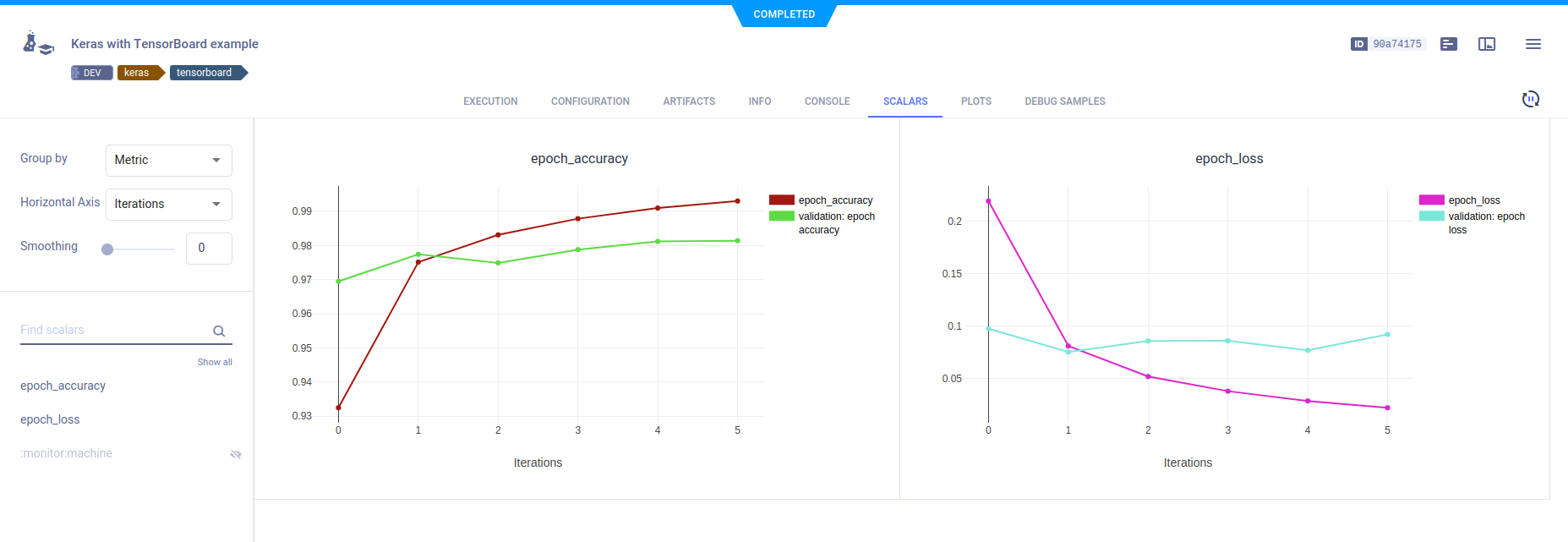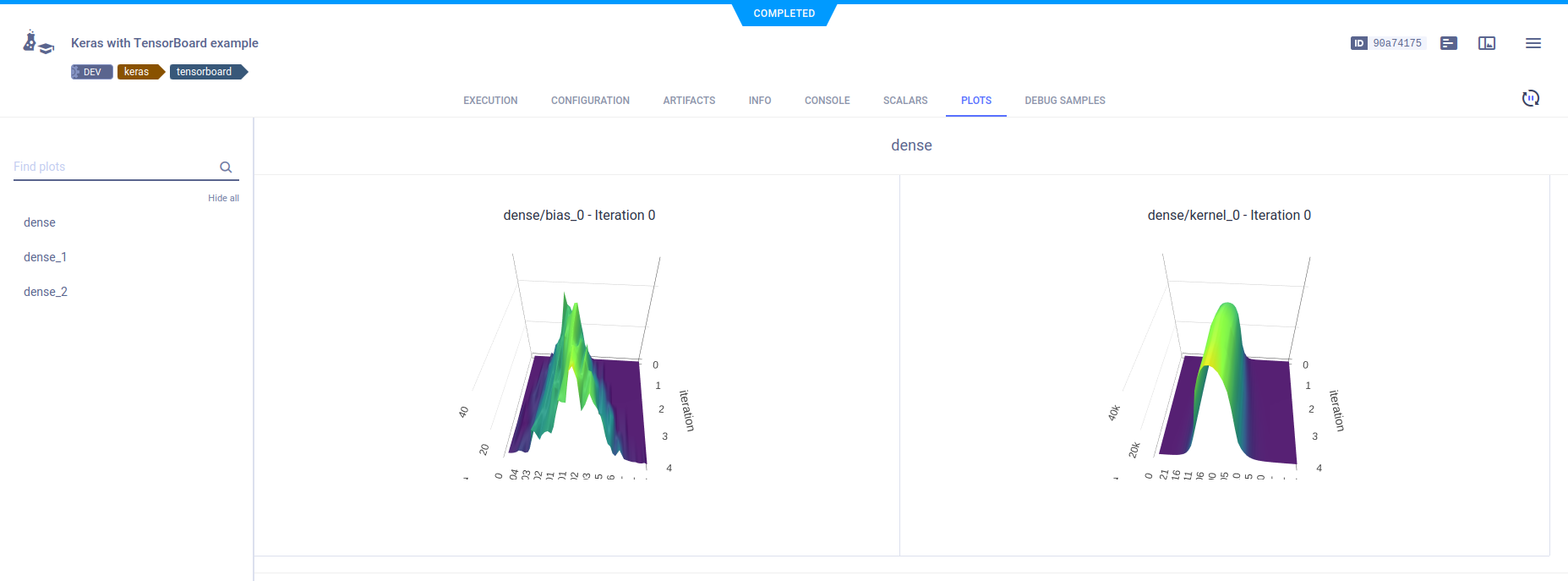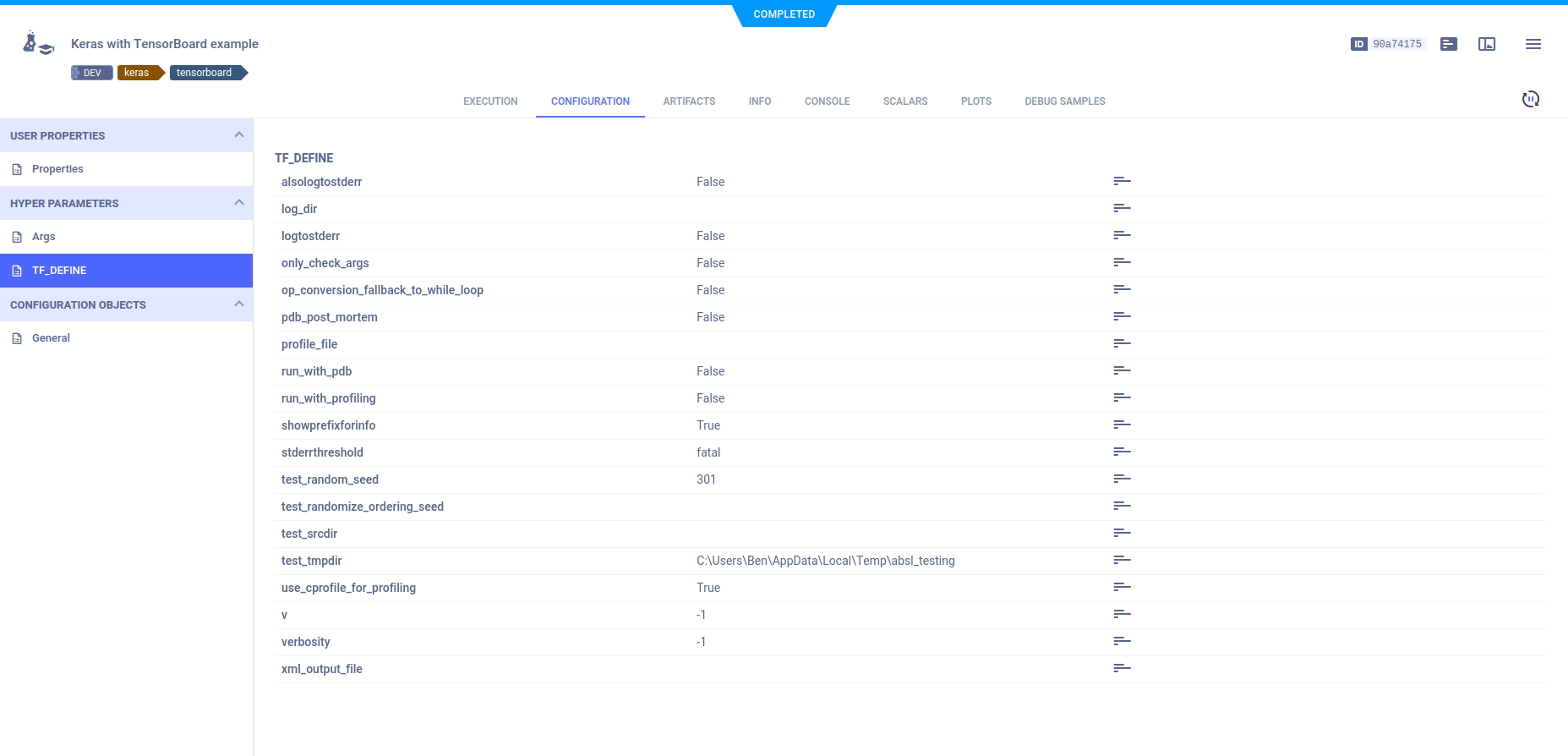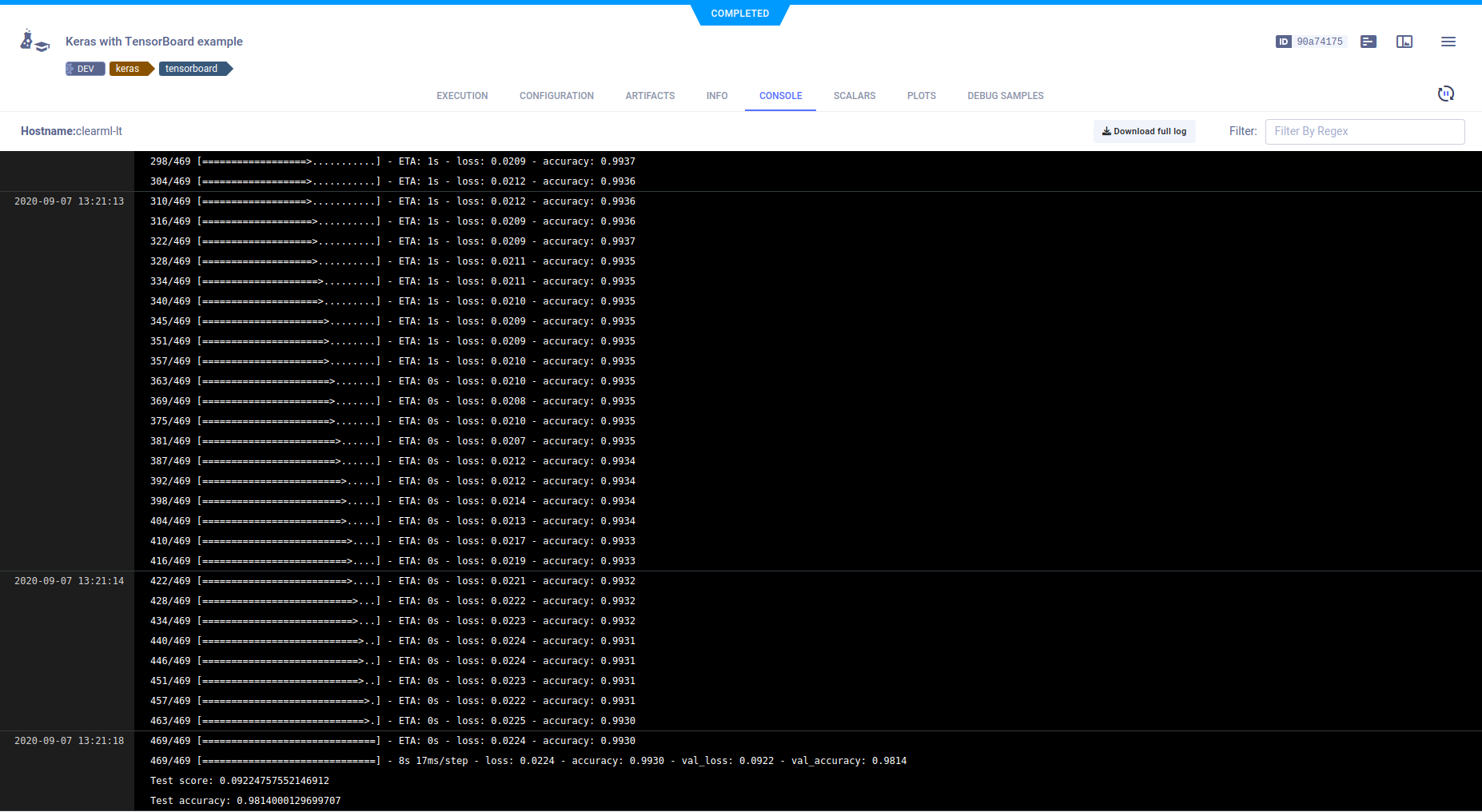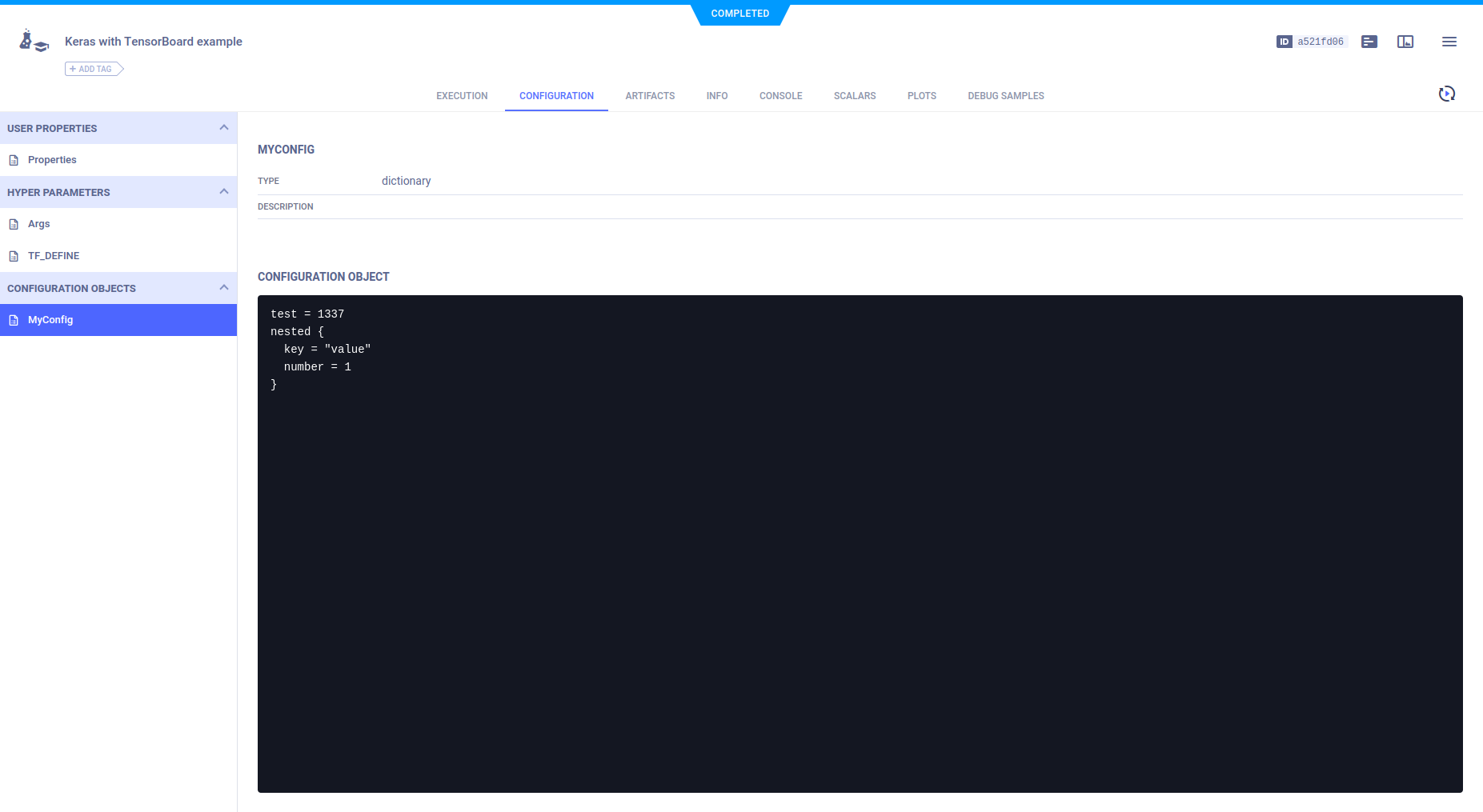2.4 KiB
| title |
|---|
| Keras with TensorBoard |
The example below demonstrates the integration of ClearML into code which uses Keras and TensorBoard. View it in script or in Jupyter Notebook.
:::note The example in Jupyter Notebook includes a clickable icon to open the notebook in Google Colab. :::
The example script does the following:
- Trains a simple deep neural network on the Keras built-in MNIST dataset.
- Builds a sequential model using a categorical cross entropy loss objective function.
- Specifies accuracy as the metric, and uses two callbacks: a TensorBoard callback and a model checkpoint callback.
- During script execution, creates an experiment named
Keras with TensorBoard example, which is associated with theexamplesproject (in script) or theColab notebooksproject (in Jupyter Notebook) .
Scalars
The loss and accuracy metric scalar plots appear in SCALARS, along with the resource utilization plots, which are titled :monitor: machine.
Histograms
Histograms for layer density appear in PLOTS.
Hyperparameters
ClearML automatically logs command line options generated with argparse, and TensorFlow Definitions.
Command line options appear in CONFIGURATION > HYPER PARAMETERS > Args.
TensorFlow Definitions appear in TF_DEFINE.
Console
Text printed to the console for training progress, as well as all other console output, appear in CONSOLE.
Configuration Objects
In the experiment code, a configuration dictionary is connected to the Task by calling the Task.connect method.
task.connect_configuration(
name="MyConfig"
configuration={'test': 1337, 'nested': {'key': 'value', 'number': 1}}
)
It appears in CONFIGURATION > CONFIGURATION OBJECTS > MyConfig.
